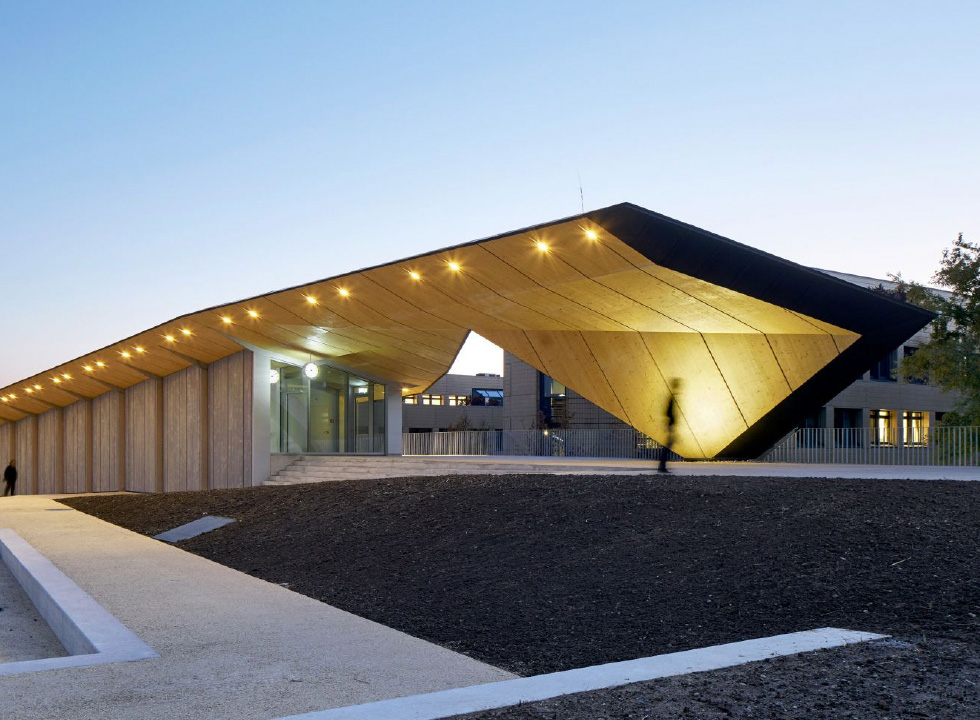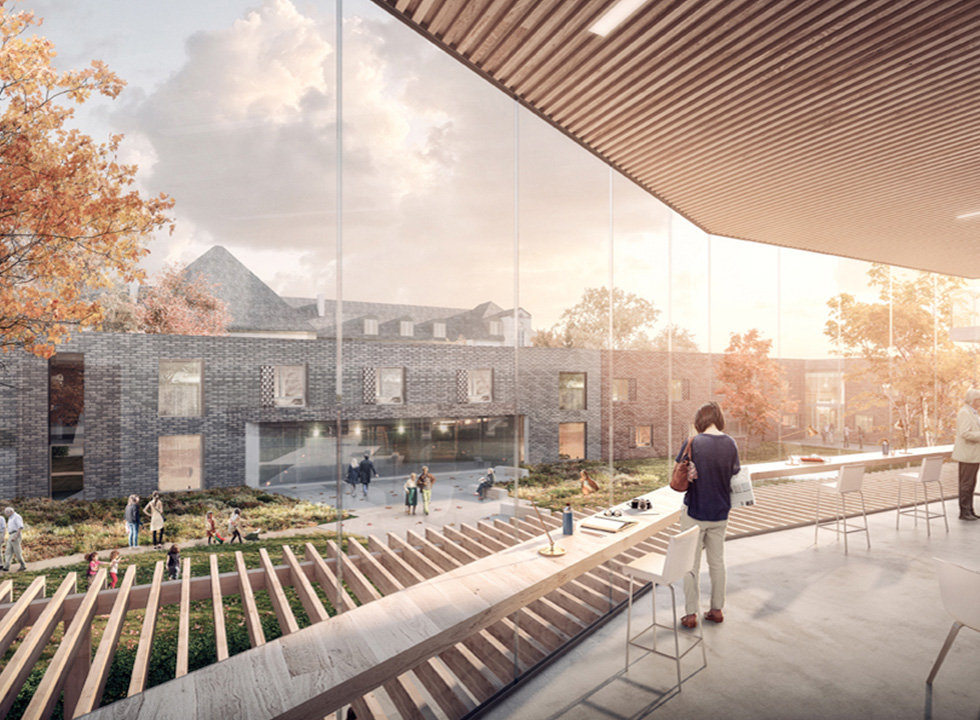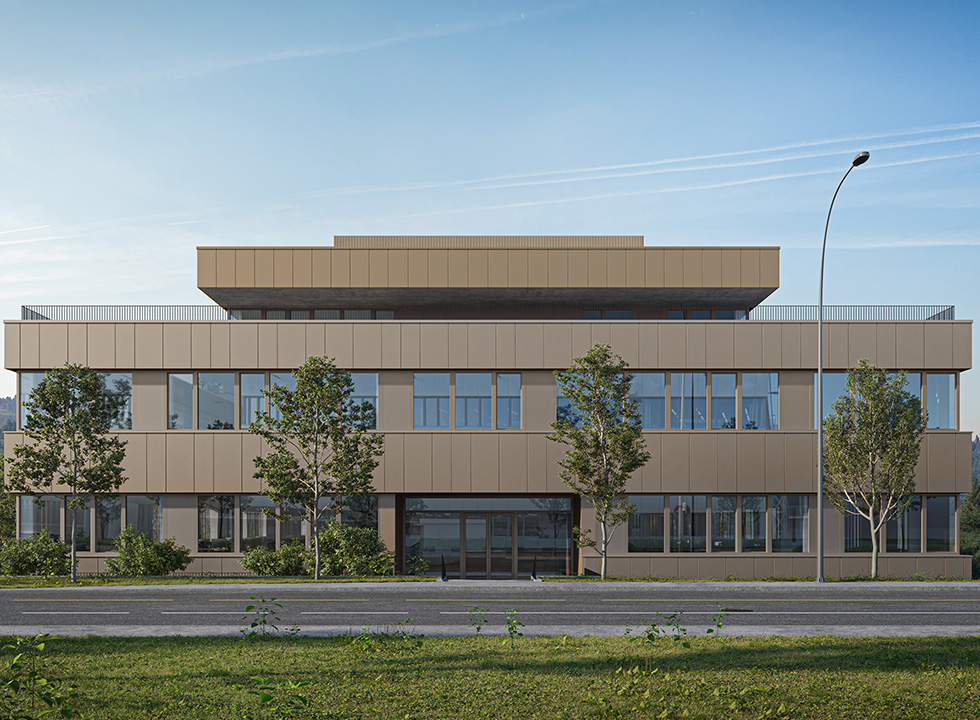Watt is Art
Art-Science Exhibition
by compáz at EPFL Pavilions
Pavilions Visitors to the Watt is Art Exhibition are introduced to the concept of using energy-positive glazing (EPoG) in the construction of new buildings. These innovative photovoltaic solar panels offer some of the essential qualities – like soundprooÿng and insulation – associated with traditional building materials but they are also aesthetically compelling. With almost unlimited design possibilities, energy-positive glazing gives architects and builders a broad palette and allows them to match their projects to the environment. And, of course, they also produce energy. The displays and presentations at the Exhibition are compelling but real-world examples demonstrate the EPoG concept vividly. Here are three buildings that have already put it into practice.

MagasinX
Uppsala, Sweden
by White Arkitekter
Magasin X in Uppsala, Sweden takes large-scale construction to new levels of sustainability. The office building, with its solid wood frame, is to become the country’s largest wooden office building. Framed by slate, generously proportioned windows let daylight deep into the offices. On the most sunlit façades, windows are separated by solar panels that generate shade as well as electricity. The panels’ dimensions optimize the placement of solar cells to avoid "dead" (inactive) areas, and the frosted glass surface smoothens the appearance. Aligning them to the colour and texture of the surrounding materials. The modern wood construction, along with the slate and solar cells on the roof and façade, contribute to a building with an impressively-low carbon impact.

Queens Ingrid’s garden
Oslo, Norway
by Omsorgsbygg Oslo KF
Ingrid’s Garden is an innovative garden-town concept whose main focus is to let individuals with cognitive impairment the opportunity to live as normally as possible within a safe framework. Omsorgsbygg Oslo KF is a leader in the development, construction and management of energy-efficient buildings with optimal environmental profiles and Queen Ingrid's Garden is no exception: the emphasis is on innovative and suitable applications of welfare and smart home technology, using a dense climate shell and good technical facilities in combination with highly efficient energy wells. The building is adapted for local energy production, with solar cells be installed on roofs in combination with Sedum plants, a gable roof and Omsorgsbygg's solar cell initiative along with the EPoG panels received through the EU Be-Smart initiative.

Industrial Building
Neuchâtel, Switzerland
by Immoroc
The energy focus of the demonstrator in La Chaux-de-Fonds is clear: solar panels are installed on the roof and photovoltaic panels are fully integrated into its active façades. The building, housing companies in the craft, industrial and administrative sectors, was planned without architectural compromise by respecting key parameters during the design stages to maintain the harmony of the architecture while obscuring the photovoltaic technology. Its ideal orientation allows it to produce energy with the help of the photovoltaic facades all day long! La Chaux-de-Fonds is a UNESCO World Heritage Site but it is resolutely future-focused and projects like this one can provide inexhaustible renewable energy that will benefit all of its residents and industries.
